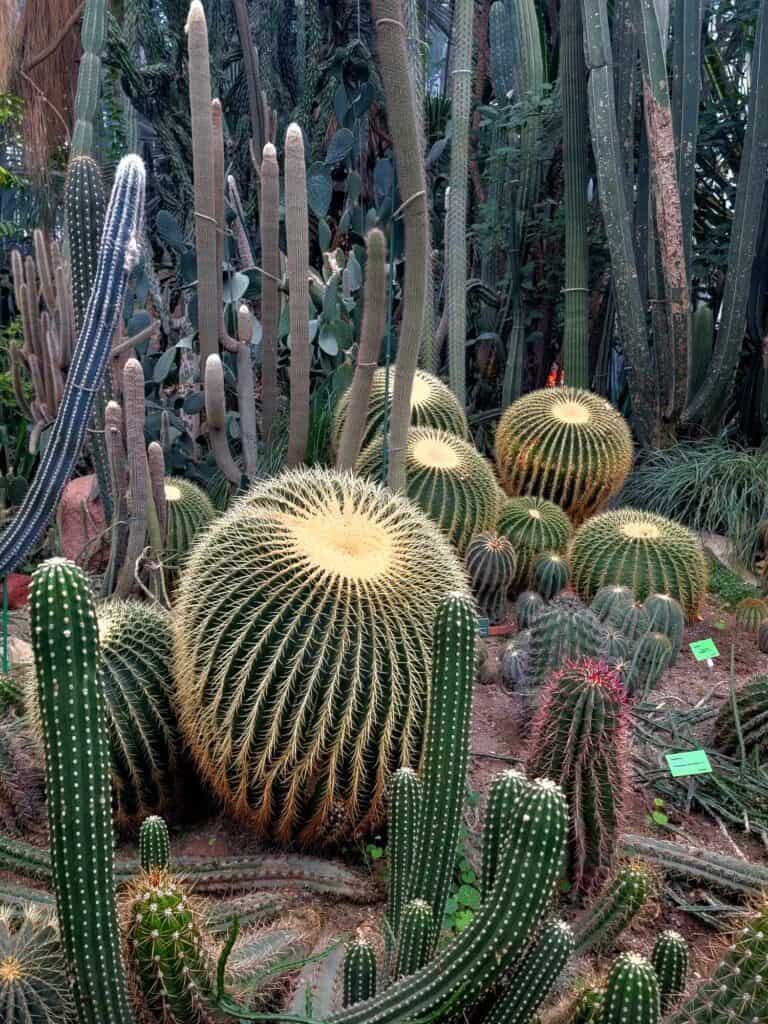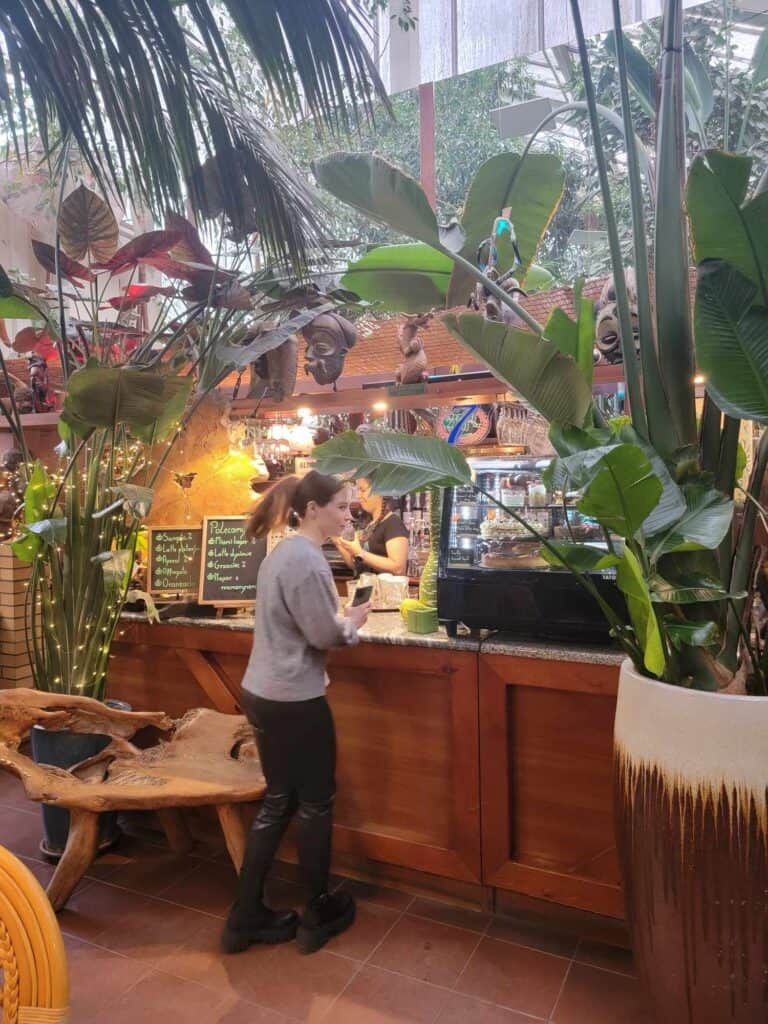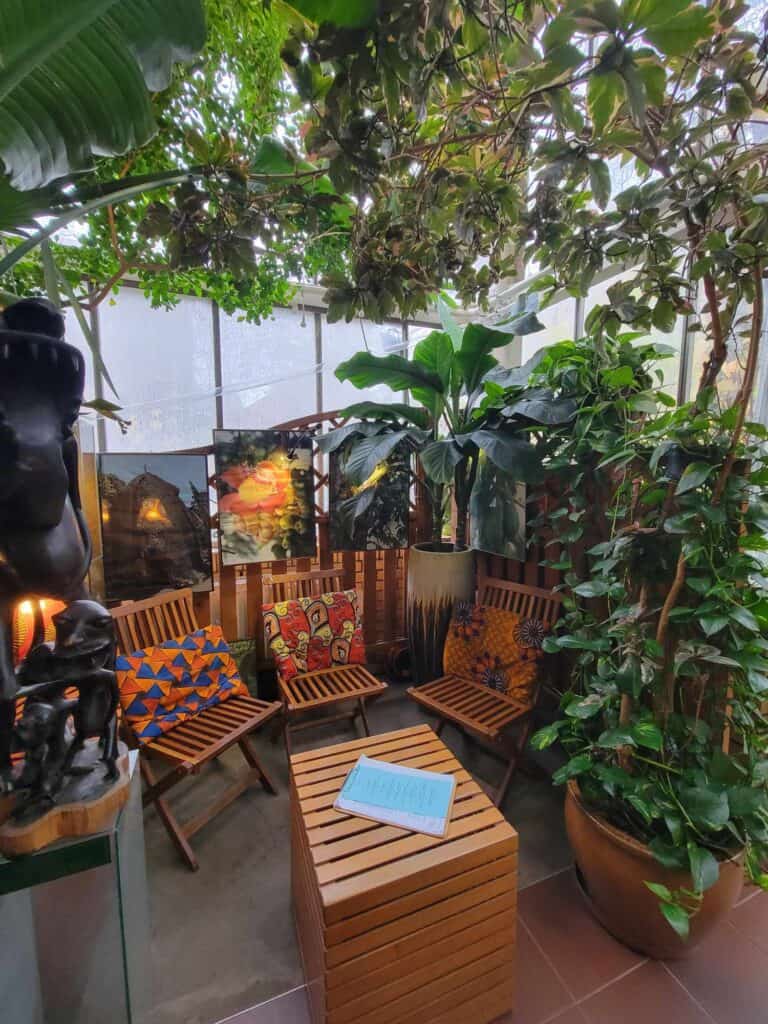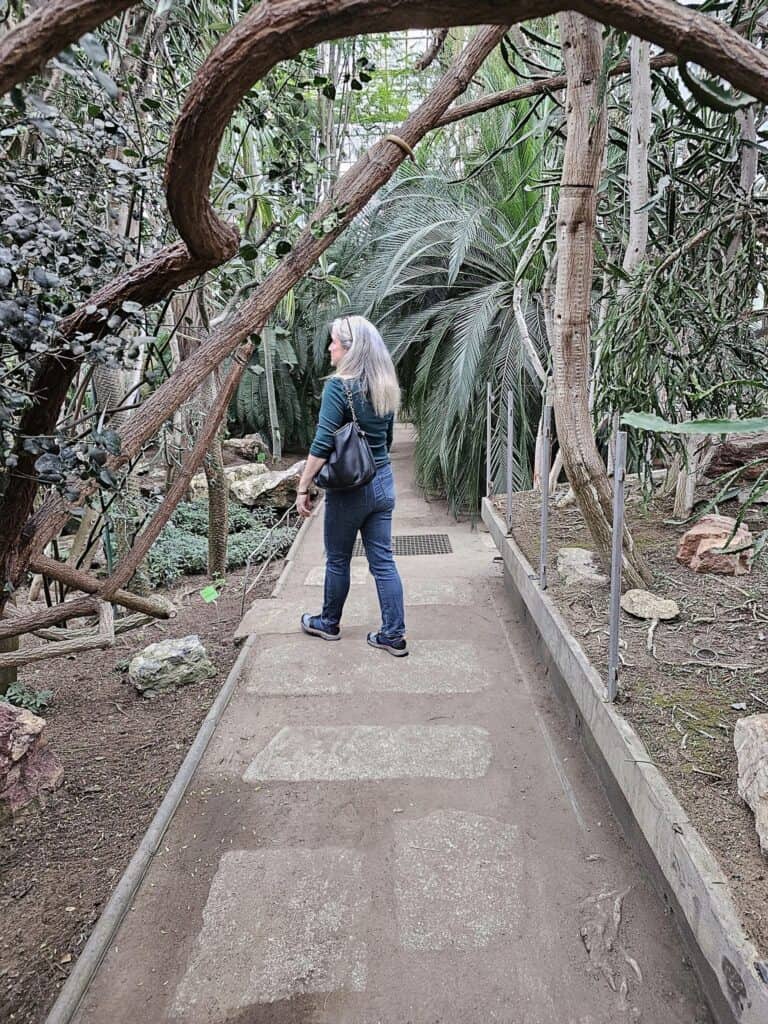In the heart of Poznan, Poland, you’ll find a hidden sanctuary filled with gorgeous huge tropical, subtropical, and savannah plants. The Poznan Palm House, an enormous complex of 12 glasshouses, boasts the title of the largest palm house in Poland, and one of the largest in all of Europe (where they are also referred to as “conservatories.”

But it’s more than just a breathtaking display of plants. A large selection of aquariums, an Instagram-worthy café, and even a giant habitrail of leaf cutter ants makes a visit to the Poznan Palm House unforgettable. I was amazed at this beautiful space!
The History of the Poznan Palm House
Origins
The Palm House began as a modest plant nursery established in the early 1900s on the site it still occupies today. This small nursery blossomed (pardon the pun) into a public botanical garden in 1903. Just a year later, greenhouses and a Japanese house were added.
But the real turning point came in 1910-1911 with the construction of the first official Palm House pavilion. Capped by a stunning glass dome, it served as a showcase for a collection of cacti alongside its stars – tropical palm trees.
The following decades saw a surge of growth for the Palm House. The collection of plants flourished, with an impressive array of exotic flora and aquariums full of fish.
In 1927 renowned architect Stefan Cybichowski designed a brand new “Second Palm House.” This grand addition significantly increased the exhibition space and solidified the Palm House’s position as a premier botanical institution in Europe.
World War II
Unfortunately, bombings during World War II heavily damaged the Poznan Palm House. Minor damage occurred in 1939, but a second bomb destroyed more than half the glass and most of the tropical plants died either as a direct result of the bombing, or because they were unable to survive the cold.
The facility managed to reopen in 1946 with a new collection of plants. The new plants were painstakingly cultivated, with many exotic species salvaged from liquidated estates that had belonged to Nazi occupiers during the war.
The Modern Era
The Poznan Palm House closed to visitors in 1978 due to poor technical condition, but managed to preserve its collection of plants and reopened with many improvements in 1992. Today this new facility has a modern boiler room, air and water filtration systems, and humidity controls that keep its impressive collection of plants incredibly healthy and robust.
Diverse Ecosystems in the Poznan Palm House
Plants
Today, the Poznań Palm House features nine interconnected pavilions open to the public, each designed to replicate different ecosystems. All told, you’ll find 17,000 plants belonging to 1,100 species. From the warm humid tropics, where vibrant orchids bloom, to the arid savannah, with its tall grasses and massive succulents, a trip through the Palm House really feels like a micro-journey across the planet.



The Poznan Palm House even features the largest cactus collection, and the tallest bamboo in Europe! It’s really quite spectacular with some very large old specimens.
All the plants have identification signs, and some have explanatory information but it’s all in Polish so have your Google Translate app loaded up, point your camera, and you’ll be good to go.



Animals
In addition to its botanical features, you’ll find water features, birds, and turtles – and a whole aquarium section featuring interesting fish.



But the most fascinating animal life in my opinion was the leaf cutter ants! A whole series of tubes that run throughout one of the pavilions lets you watch as the ants carry leaf pieces and flower petals from their feeding tank all the way to their lair which happens to be located in the café! If you ever had an ant farm as a kid, or watched the work of ants or bees you will love this feature. I stood for quite a long time, engrossed in watching them do their work.
7 Continents Café



After your exploration, the 7 Continents Café is a must-stop to keep the relaxed tropical vibe going. Surrounded by lush greenery, it offers an opportunity to sit, relax and enjoy some delicious sweet treats like apple cake, walnut cake, Polish pastries and coffee. Cake in a jungle – how cool is that?
And if your timing is good, you can snag the table by the leaf cutter ants tube and have live entertainment while you snack!
Hours of operation for the 7 Continents Café: Tuesday – Sunday from 09:00 to 17:00.
Escape from the Weather
The Palm House offers a perfect escape any day of the year. It’s especially nice to visit the Palm House on a chilly blustery day like we did. It was a lovely little diversion into a tropical (and temperate) paradise with lots of bright color and vacation vibes!
But don’t be put off from visiting in the summer either. The climate is temperature controlled, and ventilation fans and cool green shade make it pleasant throughout the year.
Poznan Palm House Gift Shop



Don’t leave without checking out the gift shop that sells real botanicals from the plants! I thought this was a clever way to support the good work of all the people who keep this amazing place going.
You’ll also find live plants, mineral specimens and other interesting gift items.
Your Visit to Poznan Palm House
How to Get There
The Poznan Palm House is located at Wilson Park, about a 45-minute walk from the Center of the market square of Poznan where the Town Hall is located. It’s 13 minutes by car.
By public transportation, the easiest way is to catch the number 13 tram, south of the market square (‘Wrocławska’ or ‘Marcinkowskiego’) and get off at ‘Matejki.’ From that stop, it’s a short walk south.
On this map, the Palm House is the red pin, and Old Town is circled in blue.

Opening Hours
Tuesday – Friday from 9:00-5:00pm (cash desk is open until 16:00, which is the last entry)
Saturdays, Sundays, and holidays from 9:00-6:00pm (cash desk is open until 5:00pm, which is the last entry)
Opening hours can change seasonally, so be sure to double check at this link.
Admission
- Regular admission is 16 PLN which is about $4
- Children up to 3 years old are free
Bring cash in Zlotis because they do not take credit cards
Coat Check
There is a coat check at the entrance which you’ll definitely want if you visit in winter. The Palm House is warm and humid and you’ll be happy not having to lug around all your extra layers.
The cost is 2.00 PLN, which is about 50 cents.
Worth a Visit



No matter the weather or time of year, the Poznan Palm House is a delightful respite from the outside world, and an opportunity to soak in the history and atmosphere of this very special place.
This link will take you to the official Poznan Palm House website, where you can learn about special exhibitions and events that occur throughout the year.
If you enjoyed this virtual tour of the Poznan Palm House, check out these related articles about Poznan!
- Is Poznan Worth Visiting? Poland’s Historical Capital is a Hidden Gem!
- 20 Amazing Things to Do in Poznan, Poland
- Is Poznan Safe? Ultimate ‘What to Know Before You Go’
- The Imperial Castle in Poznan: 3rd Reich HQ Turned Vibrant Cultural Center
- The Hilarious Must-See Goat Clock in Poznan, Poland
- The National Museum in Poznan – Discover the Hidden ‘Soul of Poland’
- Explore Citadel Park Poznan – Surprising History and Art at Every Turn
- Best Dog-Friendly Hotel in Poznan Poland – Sheraton Poznan
- 10 Unforgettable Poznan Restaurants You Have to Try!
- Poznan Christmas Markets – Celebrating Poland’s Best Kept Secret
Check out this link for current weather conditions in Poznan
To receive notifications when new content appears on The Adventure Lion, sign up below and join the pride!
